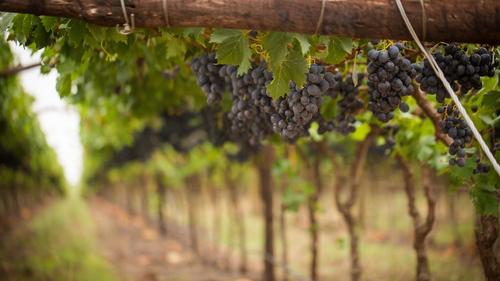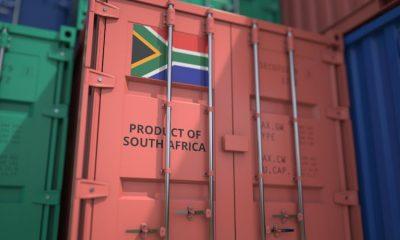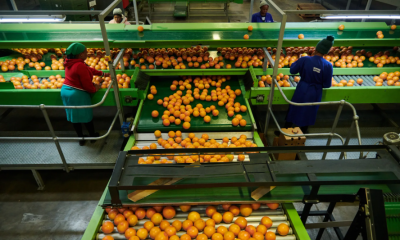Business
South African Grape Exports at Risk of 31% US Tariff: Industry Voices Concern

The South African agricultural export industry is grappling with uncertainty after the potential imposition of a 31% tariff on the country’s fresh produce exports to the US. With the fresh produce industry particularly vulnerable, the introduction of the tariff has raised serious concerns, particularly for sectors like the table grape industry, which has been a key player in the South African export market.
US Tariffs and the Impact on South African Grape Exports
As of April 10, 2024, the South African Table Grape Industry (SATI) has expressed deep concern over the introduction of the 31% tariff, which could prove disastrous for the sector. The uncertainty is compounded by the confusion around the US tariff policy, with some exporters questioning whether the country is now facing a 10% tariff, following President Trump’s announcement of a 90-day grace period, or whether the 31% tariff will remain in effect.
The US is a vital market for South African agricultural exports, particularly table grapes, with South Africa having seen a 28% growth in fresh grape exports over the past five seasons. The introduction of a 31% tariff would significantly erode the competitive advantage that South Africa currently holds in this market.
A Deeply Concerned Industry
Mecia Petersen, the chief executive of SATI, voiced the industry’s concerns, stressing that any tariff hike would have profound impacts on the sector. “South Africa prides itself on having an export-oriented agricultural sector, and the USA is one of the vital markets for certain commodities, including table grapes,” Petersen explained.
She noted that over the last five seasons, South Africa had built a strong reputation as a reliable supplier of world-class quality grapes, especially as US consumers typically purchase grapes from South Africa during their off-season. A 31% tariff would make South African grapes uncompetitive in comparison to countries like Peru and Chile, which face a significantly lower tariff rate of just 10%.
The 31% tariff, should it be implemented after the 90-day pause, would create an uncompetitive market for South African producers, disrupting the flow of exports and risking job losses in farming communities that rely on the grape export industry.
The Road Ahead for South African Grape Exporters
With the risk of a significant blow to their export business, SATI and the Agricultural Business Chamber of South Africa (Agbiz) are working closely with the South African government to ensure that agricultural exports to the US continue under favorable trading terms. Petersen emphasized that retaining market share in existing markets remains a critical priority for the industry.
While the 90-day reprieve provides a temporary window of hope, the future of South African grape exports to the US hangs in the balance. The country must now navigate a complex trade landscape, as it seeks to address the risk posed by the looming tariff and safeguard its position in the global agricultural export market.
South Africa’s fresh produce industry, particularly the table grape sector, faces significant challenges in light of the potential imposition of a 31% tariff by the US. With the grace period temporarily easing the pressure, the industry remains on edge, hoping for a resolution that would allow it to retain its competitive edge in the global market. However, with fierce competition from countries like Peru and Chile, South Africa’s agricultural exports could be at risk unless favorable trade terms are secured.
{Source Eurofruit}
Follow Joburg ETC on Facebook, Twitter , TikTok and Instagram
For more News in Johannesburg, visit joburgetc.com



























